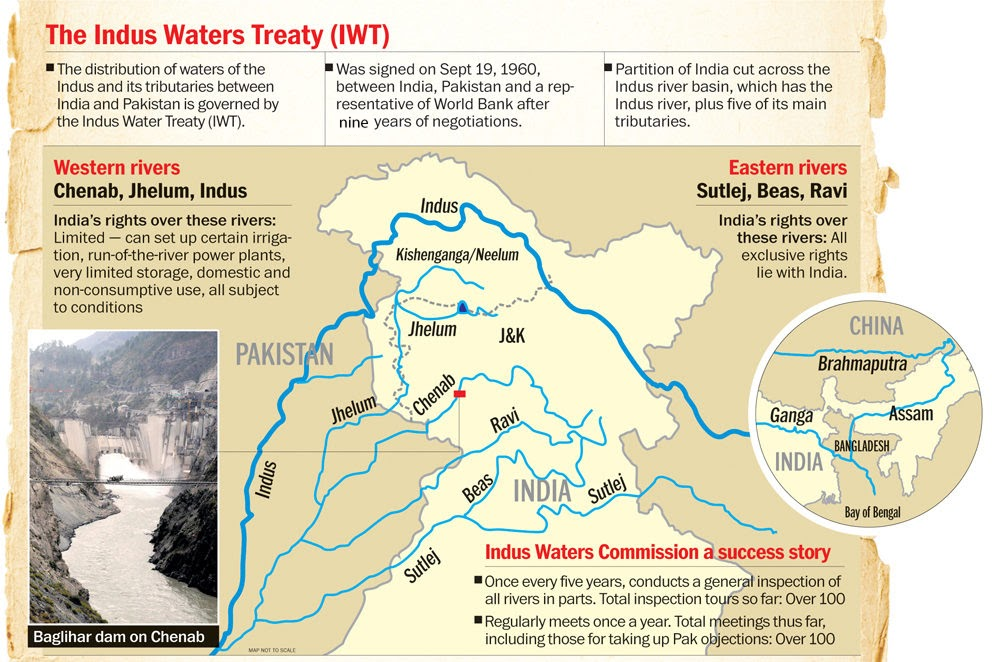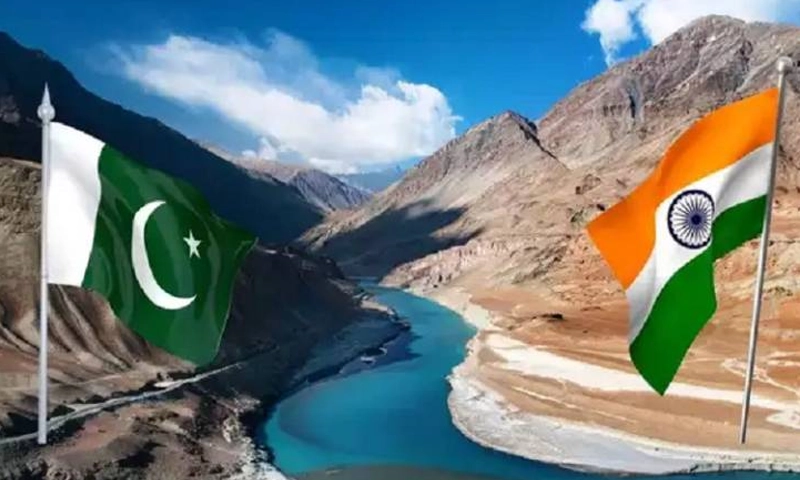Weaponising Water – Politics of Rivers Between India & Pakistan
Outline
- Introduction
- Historical Context of Indus Waters Dispute
- The 2025 Crisis: Sudden Releases into Pakistan
- Geography of Shared Rivers
- Climate Change & Glacial Melt Dimension
- Water as a Political Weapon
- Governance & Institutional Response in Pakistan
- Diplomatic Framework: Indus Waters Treaty & Its Lapses
- Humanitarian & Agricultural Impacts
- Facts & Figures
- Vocabulary Table
- Policy Imperatives for Water Security
- Way Forward
- Conclusion
Expanded Essay
1. Introduction
South Asia’s shared rivers are lifelines for hundreds of millions. Yet, in the fraught India-Pakistan relationship, water has often been framed as a political weapon. The 2025 release of floodwaters by India into Punjab has reignited fears that water is being instrumentalised beyond natural variability.
2. Historical Context
The Indus Waters Treaty (1960), brokered by the World Bank, allocated three rivers to each side. Despite wars and political hostility, it endured. Yet, since the 1990s, India has expanded upstream infrastructure, raising Pakistan’s concerns of deliberate manipulation.
3. The 2025 Crisis
In August 2025, India released over one million cusecs of water into the Chenab without sufficient warning. Punjab witnessed inundation of villages, displacement of 200,000+ people, and destruction of kharif crops. Pakistan’s Foreign Office termed it “weaponisation of water.”

4. Geography of Shared Rivers
Punjab’s agrarian economy depends on Indus tributaries—Jhelum, Chenab, Ravi, Beas, and Sutlej. Any alteration in flow directly affects agriculture, livelihoods, and ecology.
5. Climate Change Dimension
Climate change magnifies volatility: accelerated Himalayan glacier melt, erratic monsoons, and extreme weather patterns increase risks. India’s sudden dam releases exacerbate this natural vulnerability.
6. Water as a Political Weapon
New Delhi denies weaponisation, calling it a “routine safety measure.” Yet, Pakistan sees unilateral action as coercive. Scholars note a shift from cooperation to hydro-hegemonies, where upstream states dictate terms.
7. Governance & Institutional Response
Pakistan’s NDMA remained reactive; provincial authorities struggled to provide relief. The Chief Minister of Punjab was criticised for absence during peak crisis.
8. Diplomatic Framework
The Indus Waters Treaty obliges prior notification. However, data-sharing lapses persist. Pakistan has long demanded joint flood management mechanisms—yet progress remains stalled due to mistrust.
9. Humanitarian & Agricultural Impacts
- Cotton, rice, and maize crops destroyed.
- Schools converted into makeshift shelters.
- Outbreaks of malaria, dengue, and cholera feared.
10. Facts & Figures
- 200,000+ displaced in Punjab (Dawn, 2025)
- 1 million cusecs sudden release in Chenab
- Pakistan: 8th most climate-vulnerable country (Global Climate Risk Index, 2021)
11. Vocabulary Table
| Word | Meaning | Synonyms | Antonyms |
| Weaponisation | Use of resource as a weapon | Militarization, exploitation | neutralization |
| Obduracy | Stubborn refusal to compromise | Intransigence, rigidity | Flexibility |
| Inundation | Flooding | Deluge, overflow | Drought |
| Politicization | Turning into a political tool | Manipulation, exploitation | neutralization |
| Hydro-hegemonies | Dominance over water | Control, supremacy | Cooperation |
12. Policy Imperatives
- Establish Eastern Rivers Basin Authority for monitoring.
- Strengthen transboundary data-sharing through third-party monitoring.
- Develop climate-resilient embankments and drainage.
- Use AI-based flood forecasting for early warning.
13. Way Forward
Water must shift from a tool of coercion to a vector of cooperation. Only joint basin management can prevent recurring disasters.
14. Conclusion
The 2025 Chenab floods show how the line between nature and politics blurs in South Asia. Pakistan must combine diplomatic assertiveness, climate adaptation, and governance reforms to prevent water from becoming a weapon of mass disruption.


